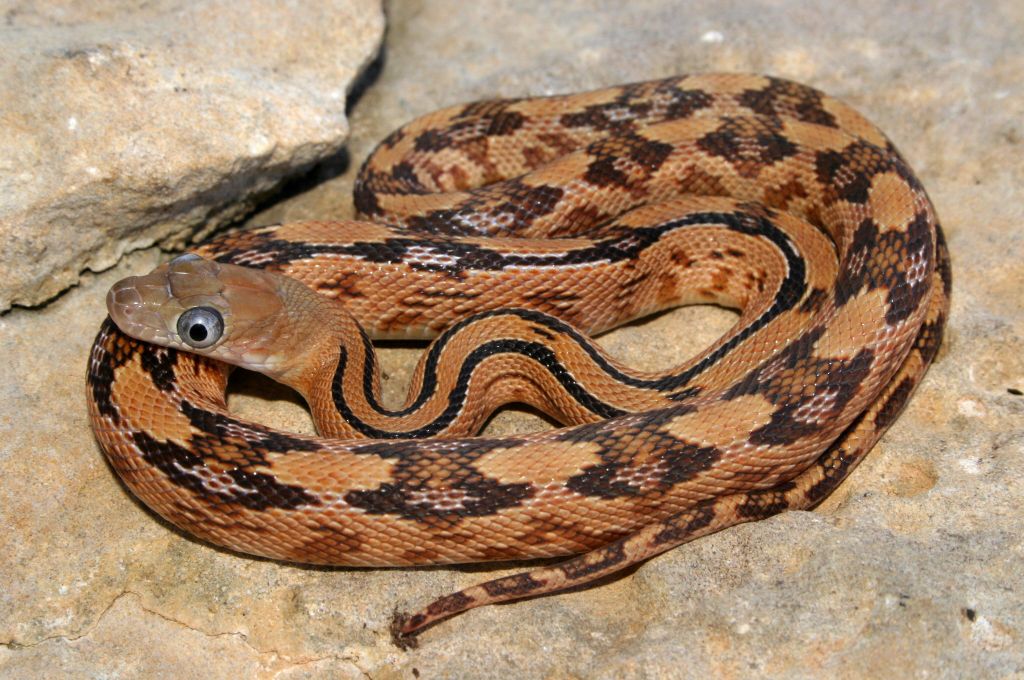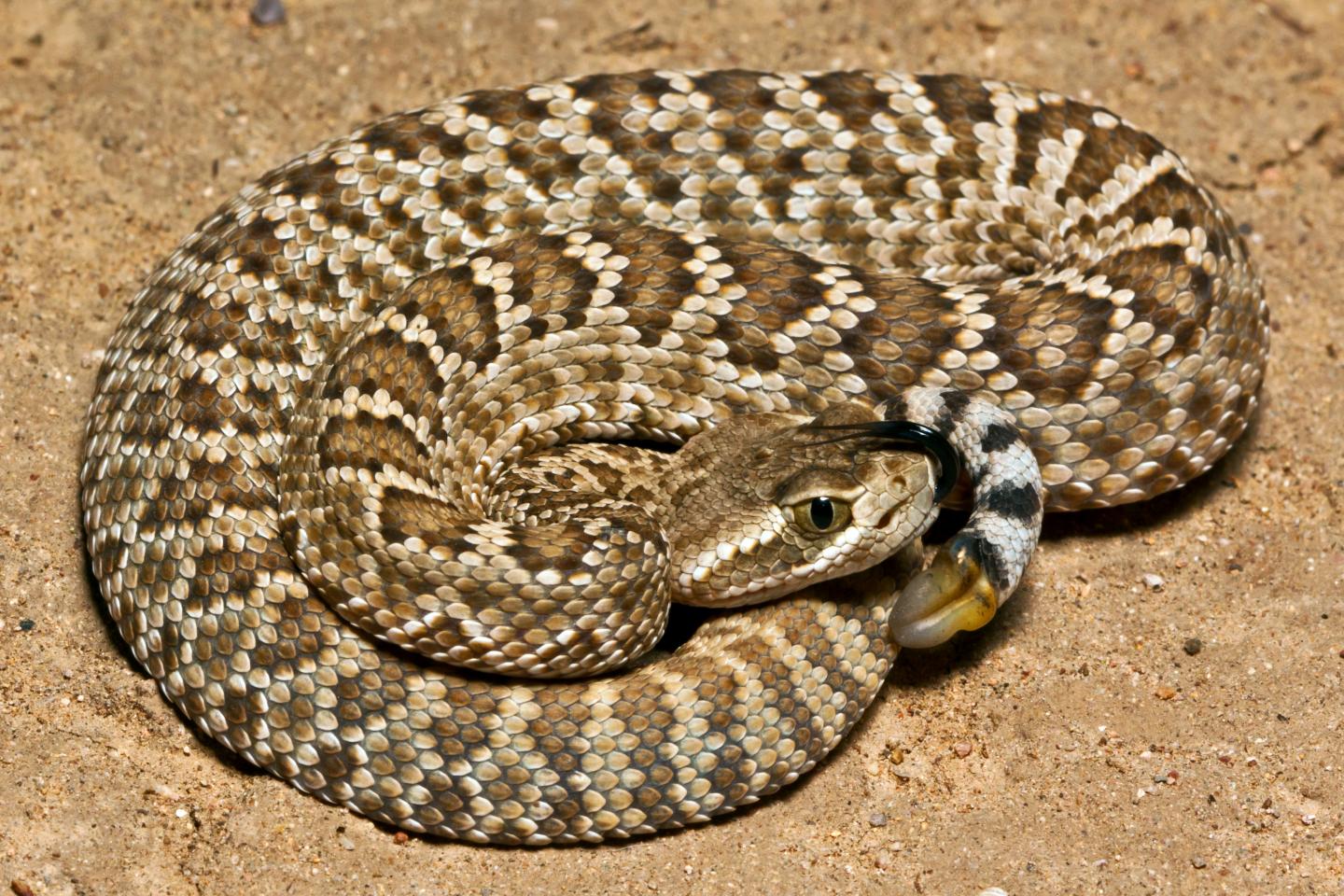Rattlesnakes are a common sight in Texas, with the state being home to 10 different types of rattlesnakes. These venomous reptiles are known for their unique adaptations and defensive instincts, making them both feared and admired by humans everywhere.
In this article, we will explore the 10 types of rattlesnakes found in Texas, including their characteristics, habitats, and behaviors.
You are reading: Discover The 10 Types Of Rattlesnakes In Texas
Whether you are a nature enthusiast or simply curious about these fascinating creatures, this article will provide you with a comprehensive guide to the rattlesnakes of Texas.

10 Types Of Rattlesnakes In Texas
Western diamondback rattlesnake

The Western diamondback rattlesnake (Crotalus atrox) is a venomous snake species found in the southwestern United States and Mexico. It is a heavy-bodied snake with a triangular-shaped head and a rattle on the end of its tail.
Western diamondbacks are pit vipers, which means they have a heat-sensing pit located behind each nostril that can detect differences in temperature, helping them to determine predator from prey.
They are found in diverse habitats ranging from desert flats to rocky hillsides, grassy plains, forested areas, river bottoms, and coastal prairies, occupying elevations from below sea level up to 6,500 feet. The Western diamondback rattlesnake is not currently threatened or endangered.
Timber rattlesnake
The timber rattlesnake, also known as the canebrake rattlesnake or banded rattlesnake, is a venomous pit viper species endemic to eastern North America. It is the only rattlesnake species in most of the populous Northeastern United States and is the second most northerly distributed venomous snake in North America.
The timber rattlesnake is a heavy-bodied snake with a wide head and narrow neck, and a rattle on the end of its tail. It can reach a length of 36 to 40 inches and weigh 1.3 to 2 pounds. The timber rattlesnake has a heavy, light yellow, gray, or greenish-white body with a rust-colored strip along the length of its back, and a black tail tipped with rattles.
It prefers moist lowland forests, mountainous or hilly forests, hardwood or pine forests, swamps and river floodplains, lowland cane thickets, and agricultural fields.
Timber rattlesnakes are ambush predators and primarily eat small to medium-sized rodents, such as mice, shrews, chipmunks, and squirrels, as well as birds, lizards, and amphibians.
Mottled rock rattlesnake
The Mottled Rock Rattlesnake (Crotalus lepidus lepidus) is a venomous pit viper species found in the southwestern United States and northern central Mexico. It is a small rattlesnake, usually gray with dark bands, but may range from tan to pinkish.
Infants have a bright orange or yellow tail tip, which they likely use for caudal luring (swinging the tail as bait to attract prey). The mottled rock rattlesnake is highly variable in pattern and coloration. It is found in mountainous areas of West Texas, New Mexico, and Mexico (Chihuahua).
The home range of this subspecies was found to be larger than that of western diamondback and tiger rattlesnakes, two much larger species at 14 ± 3 hectares. The mottled rock rattlesnake is venomous and uses its venom to subdue its prey before swallowing it whole.
Banded rock rattlesnake
Read more : 8 Types Of Cod Fish Ranked By Size
The Banded Rock Rattlesnake (Crotalus lepidus klauberi) is a venomous pit viper subspecies endemic to the southwestern United States and adjacent northern Mexico.
It is one of the smallest rattlesnake species that resides in Texas, with adults averaging a total length of only 22-24 inches. The banded rock rattlesnake is light gray with darker gray banding that varies greatly from habitat to habitat, and the ground color may even be green or purplish.
The banded rock rattlesnake’s range overlaps with that of the gray-banded kingsnake, a species similar in appearance with alternating gray and black bands along its body, which is likely an adaptation that developed as a form of mimicry.
Banded rock rattlesnakes prey on lizards, invertebrates, small mammals, birds, and other snakes, using venom to subdue their prey before swallowing it whole.
Blacktail rattlesnake
The Blacktail Rattlesnake (Crotalus molossus) is a venomous pit viper species found in the southwestern United States and Mexico.
There are four subspecies of the blacktail rattlesnake, including the nominate subspecies. The blacktail rattlesnake ranges in color from yellows and olive greens to browns and black, with entirely black tail scales being one of their most distinguishing features.
Often, these rattlesnakes have a black band across their eyes extending diagonally down to the corners of their mouth, forming a sort of facial ‘mask’.
The blacktail rattlesnake can occupy a diverse range of habitat and elevation, from grasslands and deserts to rocky areas and high-pine or boreal forests, and can be found at up to 12,000 feet elevation.
Their diet is primarily mammalian, including woodrats, squirrels, and rabbits, but they have also been reported to opportunistically take a wide variety of prey, including other snakes and Gila lizards.
Mojave rattlesnake

The Mojave Rattlesnake (Crotalus scutulatus) is a highly venomous pit viper species found in North America. It is also known as the Mojave green rattlesnake or Mohave rattlesnake.
The Mojave rattlesnake is perhaps best known for its potent neurotoxic-hemotoxic venom, which is considered the world’s most potent rattlesnake venom. It is a heavy-bodied snake with a triangular-shaped head and a rattle on the end of its tail.
The Mojave rattlesnake is found in the deserts of the southwestern United States and adjacent central Mexico, occupying a range of habitats from sandy flats to rocky hillsides, grassy plains, and forested areas.
They are mainly nocturnal and during the heat of the day hide in burrows of other mammals or under rocks, but during cooler days, they may come out during the day to bask in the sun.
The Mojave rattlesnake is an ambush predator and feeds on small mammals, lizards, and other snakes.
Massasauga rattlesnake
The Eastern Massasauga Rattlesnake (Sistrurus catenatus) is a small to medium-sized rattlesnake species found in central and eastern North America, including southern Ontario in Canada and throughout the Midwestern and Eastern United States. It is Michigan’s only venomous snake and one of only two rattlesnake species that occur in the Great Lakes region.
Read more : Top 10 Smallest Butterflies In The World
The massasauga rattlesnake is also known as the massasauga rattler, black massasauga, black rattler, black snapper, gray rattlesnake, little grey rattlesnake, muck rattler, prairie rattlesnake, spotted rattler, swamp rattler, dwarf prairie rattlesnake, eastern massasauga great adder, ground rattlesnake, Kirtland’s rattlesnake, little black rattlesnake, Michigan point rattler, prairie massasauga, rattlesnake, small prairie rattlesnake, snapper, swamp massasauga, swamp rattlesnake, and others.
The massasauga rattlesnake is a pit viper and is venomous, but it is a timid snake and will avoid humans whenever possible.
Western pygmy rattlesnake
The Western Pygmy Rattlesnake (Sistrurus miliarius streckeri) is a venomous pit viper subspecies found in the southcentral United States. It is one of the smallest species of rattlesnake in North America, with a slender tail and tiny rattle.
The general color of the Western Pygmy Rattlesnake is brownish, and it has a dorsal stripe that is bronze or dull orange. Like other rattlesnakes, Western Pygmy Rattlesnakes have hollow fangs to inject venom into their prey, and heat-sensitive pits between the eyes and nostrils that allow them to detect and accurately strike warm-blooded prey, such as rodents, even in total darkness.
Juveniles are known to wave their yellow-tipped tail to lure frogs and lizards close enough to kill and eat. The Western Pygmy Rattlesnake is listed as threatened by the Tennessee Wildlife Resources Agency and considered rare to very rare and imperiled by the Tennessee Department of Environment and Conservation.
Prairie rattlesnake
The Prairie Rattlesnake (Crotalus viridis) is a venomous pit viper species native to the western United States, southwestern Canada, and northern Mexico. It is a relatively large rattlesnake, with adults typically growing to be three feet or longer.
The prairie rattlesnake has a triangular-shaped head, a thin neck, and a distinctive tail rattle. The color of the prairie rattlesnake is usually light brown with darker brown patches that are often bordered in either tan or white.
Prairie rattlesnakes are found in a variety of habitats, including grasslands, deserts, and prairies. They are ambush predators and feed on small mammals, such as rodents, as well as birds and other snakes.
Prairie rattlesnakes are venomous and use their venom to subdue their prey before swallowing it whole.
Trans-Pecos rat snake
The Trans-Pecos Rat Snake (Bogertophis subocularis) is a species of medium to large, nonvenomous rat snake in the family Colubridae. Here are some key facts about the Trans-Pecos Rat Snake:
– The Trans-Pecos Rat Snake is also known as the Davis Mountain Rat Snake.
– It is endemic to the Chihuahuan Desert and is found in the Mexican states of Chihuahua, Coahuila, Durango, and Nuevo León, as well as in Texas and New Mexico in the United States.
– Adults are usually 36-54 inches (90–137 cm) in total length (including tail), with the record total length being 66 inches (168 cm).
– The Trans-Pecos Rat Snake’s habitat consists of desert flats and brushy areas.
– They are nonvenomous and feed on small mammals, birds, and reptiles.
– The Trans-Pecos Rat Snake has a tremendous following in the United States and is popular among reptile enthusiasts.
FAQS
1. How many types of rattlesnakes are found in Texas?
There are 10 different types of rattlesnakes found in Texas.
2. What is the most common and widespread venomous snake in Texas?
The Western diamondback rattlesnake is the most common and widespread venomous snake in Texas.
3. Are all rattlesnakes in Texas venomous?
No, not all snakes in Texas are venomous. However, all rattlesnakes in Texas are venomous.
4. What should I do if I encounter a rattlesnake in Texas?
If you encounter a rattlesnake in Texas, it is best to give it plenty of space and avoid disturbing it. If you are bitten by a rattlesnake, seek medical attention immediately.
5. Are any rattlesnake species in Texas considered rare, threatened, or endangered?
Yes, some rattlesnake species in Texas are considered rare, threatened, or endangered. For example, the Trans-Pecos Rat Snake is listed as threatened by the Tennessee Wildlife Resources Agency and considered rare to very rare and imperiled by the Tennessee Department of Environment and Conservation.
6. Where are rattlesnakes distributed in the state of Texas?
Rattlesnakes are distributed throughout Texas, but some areas have more snakes than others. West Texas, Central Texas, and South Texas are great places to go to find snakes.
Source: https://petstutorial.com
Category: Animals










